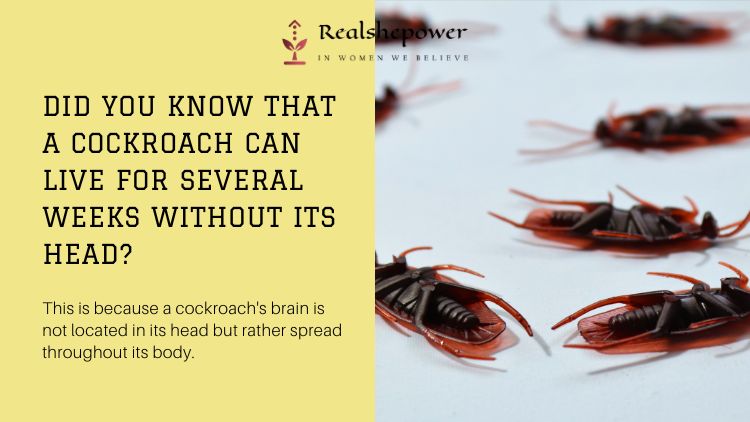A cockroach can live several weeks with its head cut off

A Cockroach Can Live Several Weeks With Its Head Cut Off

When it comes to resilience, cockroaches are often seen as champions. These unseemly insects are known for their remarkable ability to survive in various environments, outlasting many other creatures on earth. One fascinating fact about cockroaches is that they can continue to survive even after having their heads severed. But how is this possible? Let’s dive into the science behind this curious phenomenon.
The key to a roach’s survival without its head lies in its decentralized nervous system. Unlike humans and other vertebrates, cockroaches have nerve cells dispersed throughout their bodies instead of a central brain controlling all bodily functions. This decentralized nervous system allows them to execute reflexes and basic behaviors even without a head.

Typically, the initial cause of death for most animals when decapitated is blood loss or the inability to breathe. In the case of cockroaches, their small size and open circulatory system help mitigate these issues. Cockroaches do not rely on a complex respiratory system like humans do; instead, they breathe through tiny tubes called spiracles located on the sides of their bodies. As a result, they can continue to breathe even after decapitation.
Although the decapitated cockroach can still breathe, its ability to consume food is compromised due to the absence of its mouth and associated feeding structures. However, this doesn’t necessarily lead to starvation. Cockroaches are cold-blooded creatures, which means they have a significantly lower metabolic rate compared to warm-blooded animals. Consequently, they can survive for weeks without eating, as they can rely on their fat reserves during this period.
Moreover, cockroaches have an incredibly adaptive immune system, allowing them to resist infection and heal wounds relatively quickly. This further contributes to their extended survival even without a head. Nevertheless, it’s important to note that a decapitated cockroach’s lifespan is significantly shorter compared to its intact counterparts.
In conclusion, the fact that a cockroach can live for several weeks without its head is indeed accurate. The cockroach’s decentralized nervous system, open circulatory system, and low metabolic rate all play crucial roles in ensuring its survival during this extraordinary situation. So, the next time you encounter a cockroach scuttling around without its head, you’ll know that it’s not a scene from a horror movie but rather a testament to the incredible adaptability and resilience of these creatures.
Source: Science Focus
Tags
Share
Related Posts
Quick Links
Legal Stuff

